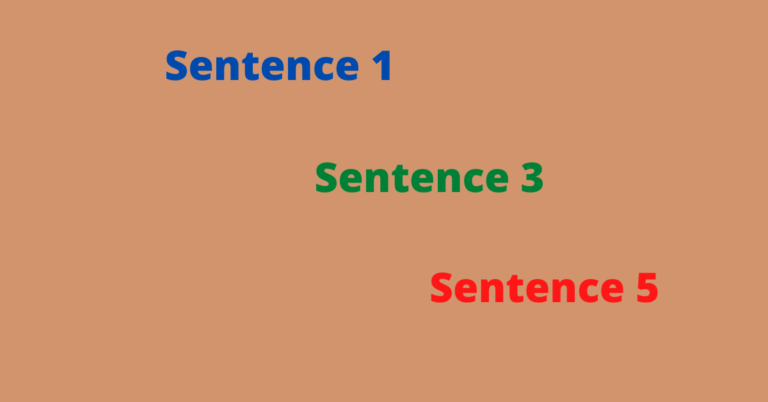Top 6 Argumentative Essay Examples
Introduction
Argumentative essays are a way to prove your point of view. They’re not just about making points but also testing the validity of those points and countering any opposing arguments. This article will explore some examples of argumentative essays that use strong evidence, reason, and persuasive language to make their point.
However, in case you wish to skip this guide due to reasons such as a busy schedule, our top writers are ready to cover you by ensuring that your argumentative essay is written to the highest standards. All you need to do is place an order with us!
Important points to consider before writing an argumentative essay:
1) Choose a good argumentative essay topic that you have an interest in and understand.
2) Make sure that your argument will stand up to scrutiny.
3) Don’t just make a blanket statement or claim. Empower it with evidence and reasoning to support it. Don’t be afraid to say you don’t know something; it’s better to admit the truth than try to deceive the readers. Sometimes, you will find that your evidence and reasoning lead to a conclusion that differs from what you initially thought.
4) Your thesis statement should include not only your point of view but also the information that’s relevant to it so readers know all the important points you’ll be covering in your essay. Your thesis statement should include three parts: the topic, your point of view, and any opposing viewpoints.
5) Use proper grammar and language to convey the message you’re trying to give. Your readers should be able to understand what you’re saying without getting confused by your wording or sentence structure.
6) Make sure that your essay is organized in a way that presents your point of view in the most logical order. If you’re writing about a topic where there’s some background information, like with a historical argumentative essay, make sure to include it before you move on to your main points.
Outline of the argumentative essay example
Like with any other essay writing process, argumentative essays do have an outline that you have to follow. It’s not a set format like the outline for a persuasive essay, but it is necessary, regardless of what kind of essay you’re writing.
A general structure of an argumentative essay is the introduction, body paragraphs, and a conclusion; however, the most common format is:
I. Introducing the topic and thesis statement
In this section, you should tell readers your point of view on the issue or problem that you’re writing about. It will also show why this is an important issue and why you should care enough to write about it.
A thesis statement can be in the form of a question or a more direct statement, depending on whether you’re supporting or opposing a point of view already presented. Your thesis statement is your position on the topic, and if you’re not taking a stand on something, then don’t write an argumentative essay.
II. Relevant issues
This section will present your supporting evidence. You should look up as much information about the topic as possible to be able to back up your thesis statement with facts and statistics. It’s important to use as many reliable sources as you can find, but your judgment will still be necessary for deciding what a valid source is and what isn’t.
III. Countering opposing viewpoints
This section will show opposing points of view on the topic and why they are invalid or incorrect. You’ll have to do some research to ensure that your counter-arguments are valid, but they should be easy to create if you’ve done a thorough job of researching the topic.
IV. Conclusion
In this section, you should restate your thesis statement and provide your final arguments supporting it. Ensure that these arguments are different from those made in the body of the essay and closely related to each other.
V. Significance of the topic
This section will show how your argument is relevant to everyone, not just you. It serves two purposes: it shows that your writing matters by helping with a cause or taking care of an issue, and it tells readers why they should be interested in your topic if they weren’t before.
Good argumentative essays examples


These examples of argumentative essays are a great way to see what makes a piece successful. It’s important to start with the topic, so these should be read from top to bottom. The examples below are about general issues and can be used with college, high school, and middle school students.
Example 1:
Dress codes for students
I disagree with the idea of imposing dress codes on students in public schools. Students should have the right to wear any clothes they want within reason because they need to feel comfortable in their skin and express themselves however they choose. Schools should allow for individuality, or at least offer some sort of compromise between a dress code and not having a dress code if this is what the students want.
Many negative consequences come with imposing strict dress codes on students. One of them is that it limits their freedom to choose what they wear. This can lead to students feeling pressured to dress in the accepted manner, which often means dressing in more expensive clothes than those they’d normally choose and usually limiting themselves to one style over another.
Another consequence of imposing a dress code is the cost incurred by lower-income families. When schools make students abide by certain dress standards, it means that to meet them, the family will have to spend a lot of extra money if they can afford it instead of spending on more important things. This is even worse for lower-income families who often don’t have anything left after paying for necessities and can’t even afford to spend extra on clothes.
The final consequence of requiring students to wear specific clothing is that it excludes those who cannot meet the dress code standards. Many families don’t have money for designer brands, so some kids may feel less accepted because they can’t afford or get the same clothing as some of their peers. For many kids, this can cause them to feel left out and lacking confidence in themselves.
There are many ways that schools could potentially deal with dress codes if they want to have one without all the negative consequences. One way is to have a specific day when students can show up in anything they want as long as it’s still decent. This is easy to do because the particular day won’t require any extra effort from the school. It will give students a chance to express themselves without worrying about keeping up with fashion trends or being judged by their peers for their selection of clothing. Alternatively, schools could allow students to wear whatever they want on a day-to-day basis but require everyone to wear the same uniform at school. This is much easier for students because it doesn’t require them to buy new clothing and allows everyone to be more comfortable attending school.
Another important thing schools could do with their dress code policy would be to focus more on a person’s behavior and less on what they’re wearing. This can help deal with the negative consequences if a dress code is still imposed because it will encourage students to focus more on each other’s ideas rather than judging them based on their clothing choices.
In conclusion, imposing strict dress codes in public schools has many negative consequences that outweigh the benefits. If schools want to have some type of dress code despite this, they can relax their rules to allow for a certain day when students can wear whatever they want or requiring them all to wear the same uniform.
Example 2
Should the government regulate media violence?
In recent years, there has been an increased awareness of media violence in the US. This is because many studies have suggested that watching a lot of violent content on TV or playing violent games may have damaging effects on people’s thoughts and behaviors. It’s understandable why some people might not want to take this risk, but it turns out that these fears may be overblown.
Although some people are likely to be affected by watching a lot of violence, the evidence suggests that violent media is actually not a significant factor in large-scale violence. This could be because people who play and watch lots of violence are already mentally ill or predisposed to doing such acts of their own accord, so there isn’t much of a correlation between the two. Even if it is true that violent media has some effect on certain individuals, those effects are often not large enough to cause serious harm.
There might be a lot of concern about this issue because people may think that simply watching violence can turn someone into a criminal. However, most people don’t play shooter games and watch violent movies to do any harm, so it seems unlikely that this is a real problem.
Another important point to consider is that many people find violent media entertaining. It’s been shown that watching or playing someone getting hurt is not inherently harmful, especially if it serves as a source of enjoyment. If people want to enjoy something like this, they don’t deserve to be told that they can’t or shamed for it by the government.
In conclusion, the government should not regulate media violence because there isn’t much evidence suggesting that such laws would help prevent serious crime, and it’s unlikely that violent media is harmful to most people.
Example 3
The government should substantially decrease the price of higher education across the US.
Currently, many students have difficulty paying for their college tuition as it becomes more and more expensive each year. It is becoming harder for these students to afford to go to school because they didn’t do any planning ahead and need some type of loan to pay for it. Many experts have argued that these rising tuition costs are caused because colleges aren’t held accountable for their spending and only care about making as much money as possible, which should be a concern to everyone involved in the process of higher education.
One reason why tuition keeps increasing is that college officials get paid more if they raise their education. This leads to a conflict of interest where they feel more compelled to increase the cost of college than work hard to make it affordable. Another reason why colleges don’t care as much about lowering the price is that most students rely on financial aid from the government to pay for school, with little concern given to how much they might be helping to raise tuition costs.
It’s also important to consider that the current government funding system for higher education is not working well. In many ways, it is similar to what happened with mortgage loans, where students were being sold debt in a predatory manner and encouraged to take out more loans than they could afford. While it’s certainly true that college loans are not as bad as subprime mortgages, the risk is still there for another debt bubble to occur.
The current system also harms students because their tuition keeps rising each year, making it harder for them to pay for school and more likely that they will run into financial problems later on in life.
In conclusion, the government should substantially decrease the price of higher education to make college more affordable for students and help prevent a debt bubble from occurring.
Example 4
Are cell phones a distraction in class?
Many schools have called for bans on cell phones to prevent students from being distracted during class. However, banning cell phones does not seem like the best approach because there are several reasons why this could be a bad idea.
One reason why banning cell technology would be wrong is that it doesn’t solve the problem of distracting students in class. People can still be distracted by other things while using their cell phones, so it’s unrealistic to think that this problem would disappear if students weren’t allowed to use them.
If the government banned cell phones from schools to prevent distraction, it would also have a negative impact on the education of students. Using cell phones is a good way of accessing information for students, especially when researching papers and presentations. It would be hard to do this without access to technology like this, and banning it from school seems wrong because they are making something useful more difficult to use.
Another reason schools should consider allowing cell technology in class is that it might encourage students to be more engaged. Many students have difficulty concentrating and paying attention when forced to sit still for long periods of time, so having something like cell phones in class could help them stay alert.
Cell phones can also help teachers communicate with other teachers and parents. It’s easier to contact people via cell phones than it is by calling a telephone number.
Banning cell technology from schools would do more harm than good and put students at a disadvantage in the classroom. Schools should not ban cell phone use because they could be creating an even bigger distraction for their students.
Example 5
Should the government be involved in computer technology?
Some people think that computers have become an important part of everyday life and the government should start funding their development. However, others disagree with this idea. They believe that computers are just another product, so private companies should pay for it themselves without any help from taxpayers. In addition, giving away taxpayer money to private companies will cost the government a lot of money in the long run.
It would indeed take a lot more funding for research and development before computers are capable enough to be used on a large scale. However, it’s worth investing in technology because computers have many benefits. They can make people’s lives easier, they could help with research, and it is much faster to look up information on the internet than using a book or magazine.
Some people might be worried that if computers are made freely available, people will abuse them by spending too much time on them. However, there’s no need to worry because the government could put restrictions on the use of computers. They could make it so that people can only use them for a certain amount of time per day, or there could be an age limit for when you can start using them.
There might be some adverse effects if the government starts paying for computer technology. There could be a lot of lost revenue from taxes, or inflation rates might increase. However, in the long run, there are many more benefits to computers than problems. It’s clear that if computer technology advances, it should not be stopped by people who don’t want to pay for it.
Example 6
Health care for illegal immigrants
Some people believe that if a sick person needs medical help and is an illegal immigrant, the government should pay for it. In addition to helping treat their illness, doing this would also encourage them to seek medical attention when they need it.
“It’s not fair to be punished by being denied health insurance just because you came here without documentation.”
When undocumented immigrants get sick, they have to pay for their medical treatment. However, this can put a heavy burden on them, and it’s not fair. People must be treated fairly in the United States by getting the same level of healthcare as everyone else living here legally.
Some people may be against providing free health care to undocumented immigrants because they entered the country illegally. However, this is not a valid reason for not paying for their treatment. Even if someone crosses the border without permission, they still deserve fair and equal rights. They are human beings just like everyone else in the United States.
This issue is a difficult one because it is a matter of life and death. People eventually die if they don’t receive proper treatment for their illness, so something should be done. However, providing free health care to undocumented immigrants won’t solve all the problems in our system. There’s more that needs to be done than just this.
In the end, illegal immigrants should receive free healthcare because it’s unjust to punish them by denying medical treatment. They are still people who deserve equality, just like everyone else in this country.







